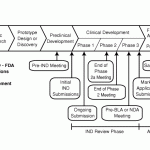The study looked at PRISM-1 for “patient-reported impact of symptoms in myotonic dystrophy type 1” — was conducted in two parts. What was surprising is that Fatigue and mobility are the two items that affect Dm1 patients the most.
Phase 1 involved interviews with 20 people age 21 or older with adult-onset MMD1. (People with congenital- or juvenile-onset MMD1 were not included in this study. These diseases have separate symptoms, onsets, and progression paths)
In the interviews, people were asked to identify the symptoms of DM1 that have the greatest effect on their lives. Recurring similar comments were grouped to identify 221 important DM1 symptoms, which the investigators then divided into 14 themes. All 20 people who were invited to participate in this phase did so.



 here are now quite a few different ways that myotonic dystrophy can be defeated. To the left is the pathway that the FDA requires and the most advanced pathways are still in animal studies. This is a nice article but technical.
here are now quite a few different ways that myotonic dystrophy can be defeated. To the left is the pathway that the FDA requires and the most advanced pathways are still in animal studies. This is a nice article but technical.